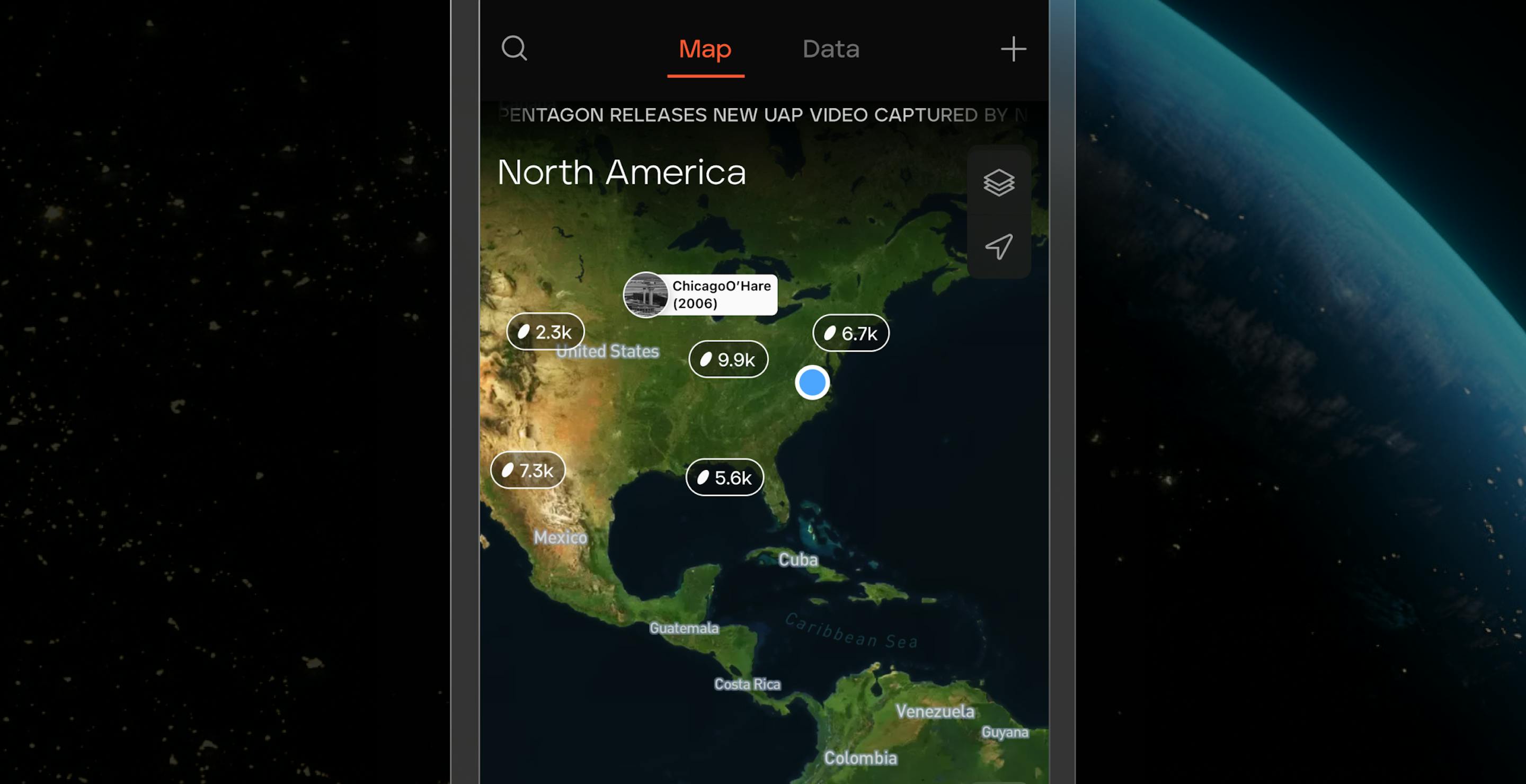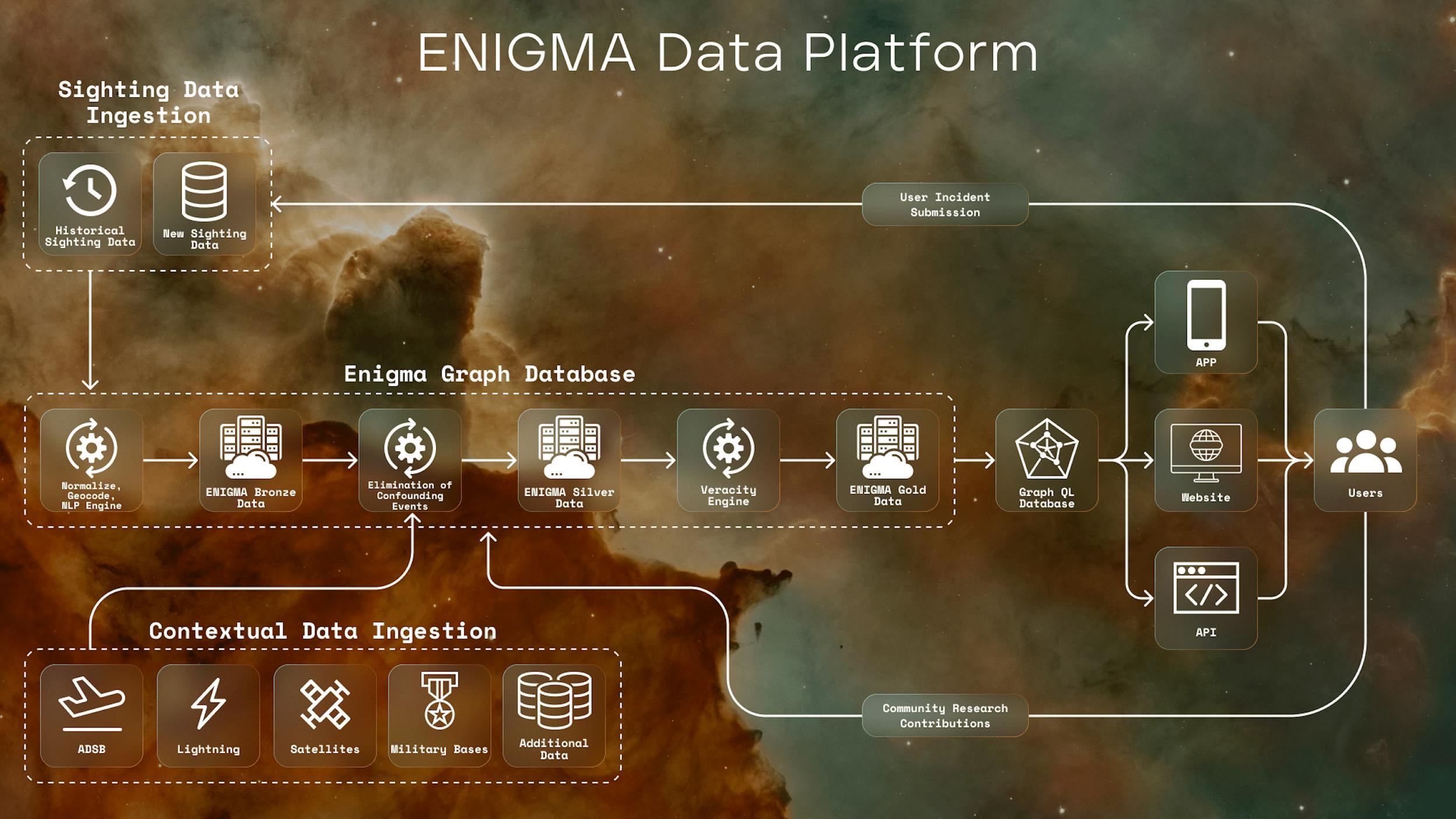

Announcing Enigma Labs
In 2017, the New York Times ran a front page article on The Pentagon’s Mysterious UFO Program, revealing that in 2007 top senators and defense officials had put $22m into a secret government program to investigate Unidentified Aerial Phenomena (‘UAP’ formerly known as UFOs).
While UAP has long been a taboo topic, recently there has been a dramatic shift in Washington. U.S. authorities, including President Barack Obama and former Director of National Intelligence John Ratcliffe, have gone on the record to confirm that these objects are real and display capabilities well beyond known U.S. technology. Senator Marco Rubio, former acting Chairman of the Intelligence Committee, claims that these objects are "not ours." Senator Mitt Romney has gone further and stated that he does not believe these objects are the product of foreign adversaries.
Last summer, the Office of the Director of National Intelligence (ODNI) released an assessment of 144 UAP sighted by the U.S. military. They were able to explain only one of the objects, which was identified as a large balloon. The majority were confirmed to be physical objects through detection across radar, infrared and electro-optical sensors. Many displayed unusual movement and flight characteristics. Navy pilots who chased UAP in fighter jets have started to speak publicly about the objects, describing them as having no signs of propulsion, rapid acceleration and deceleration, ability to disappear and reappear, and ostensibly unlimited airborne time.
The National Defense Authorization Act, which President Biden signed into law in December, included an amendment sponsored by Senator Kirsten Gillibrand creating a new office to study UAP. While there is now a concerted effort to understand the phenomena, the ODNI acknowledges that lingering "sociocultural stigma" and "data collection processes" remain a challenge for officials.
In parallel to this shift in Washington, there has been an explosion of interest from the general public. Yet demand is not being met by mainstream media or forums. And there is no obvious destination, credible authority, or technology solution pushing forward progress on UAP.
Enter Enigma Labs – the first well-resourced team of technologists to build a dedicated data, community and research platform for Unidentified Aerial Phenomena. We are posting now because we are looking to hire additional technical talent. We will continue to build quietly in stealth and will share further details about the project in coming months.
One of our first goals is making the UAP field actionable and approachable for empiricists. Nearly 100,000 sightings have been reported to volunteer American NGOs like NUFORC and MUFON, who have made a valiant effort to collect witness accounts since the beginning of the 20th century. That number is surprisingly high given the friction in using those sites, phoning in testimony, and general taboo around the topic.
Like weather, UAP do not stop at borders, and thousands more sightings live in foreign databases. Yet incident capture and witness accounts are not standardized across agencies or countries. The lack of high-res geocoding and localized time-stamping has stymied progress. Other sources of data, like USAF pilot accounts, are only available in analog form like paper reports. Transforming these to a universal incident model is one of the first challenges we are tackling.
Below are snippets from U.S., U.K. and Sweden datasets. Note the variation in their field availability and form.
Advances in context-aware OCR, NLP (particularly vectorization), ETL stacks and data modeling open the door for robust usage of data for research. Specifically, GraphQL with the addition of natural syntax engines such as Weaviate allows for contextual queries across historical incidents and extraction of data for analysis.
Credentialed UAP investigators find that 95-97% of citizen sightings are identifiable objects. Our model layers historical and new user-generated UAP sightings with confounding variables – including planes, satellites, stars, planets, drones, lightning, solar fields, solar flares, weather, and ionosphere phenomena. Many of these sources are satellite-derived and only recently became commercially available.
Our model enables us to filter reported UAP accounts down to the high signal, truly unidentified phenomena ('Enigma Silver Sightings'). Once standardized and run through our contextual engine, we can assign believability scores based on a multivariate factors such as the number of witnesses, day versus night, the level of detail in the report, media footage, etc. We can then tease out high interest events ('Enigma Gold Sightings').
By focusing on what we see (incidents), collating this with things we know (telemetry, weather, star positions), and leveraging what we’ve forgotten (nearly eight decades of UAP interest), Enigma will drive forward progress in a space that has stalled for decades.

A summary of the Enigma data architecture
Existing historical datasets are helpful context and paint a picture. But these historical accounts lack important information and the collection process is high-friction. With Enigma, anyone can immediately and easily submit a new sighting on our mobile app and include key information:
- Inline media submission, with EXIF and device metadata intact
- Submitter demographics and environmental factors
- Polling around the submitter's subjective state and emotional response
- Enriched location data, such as the observer’s heading and speed
- Tagging of other witnesses to submit their testimony
Enigma users can tap our contextual engine to explain something they have seen as known phenomena. In this way, our model eliminates explicable sightings prior to ingestion. Armed with the facts, we can focus on the unexplainable.
We have built a robust MVP and are now expanding the available data, analytics, and functionality. Our roadmap includes:
- Computer vision for multimedia object recognition
- Development of a UAP specific ontology and taxonomy to refine NLP
- A collaborative coding environment to analyze datasets and improve the model
- Pipelines to ingest new sightings from the community and academic researchers
- Push notifications to users when an event occurs in their area.
We are excited that scientific groups will be deploying telescopes and sensors to capture high quality footage over the coming months. We hope to engage with these organizations once their new sensors come online, so that our userbase can be activated in real-time to corroborate sightings within a designated radius.
We will be making our platform available through mobile, web and API. In coming months, we will post further details and demos of the product.
We are looking for exceptional people to come search with us. Enigma remains neutral on the cause of UAP for now and welcomes all perspectives. Currently we are hiring front-end iOS and Android developers. We are also looking for folks familiar with GIS, NLP and OCR, media processing, object detection, GraphQL, ETL, ADS-B, weather data, mapping, mobile UX and data visualization. If you don't have any of these skills, but are excited about the project, we would also love to hear from you.
Click here to learn more or send us a note at [email protected].
Project Blue Book, the last formally acknowledged U.S. government sponsored UAP investigation, found that 701 out of 12,618 sightings (~5.5%) could not be conclusively identified.
GEIPAN, France’s official government UAP investigative body, has found that 99 out of 2,958 cases (3.3%) they have formally investigated could not be conclusively identified. An additional 982 cases could not be identified due to a lack of data.